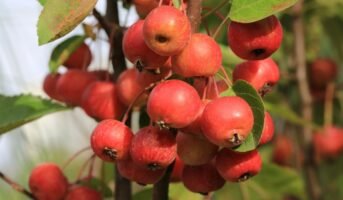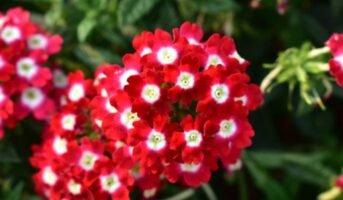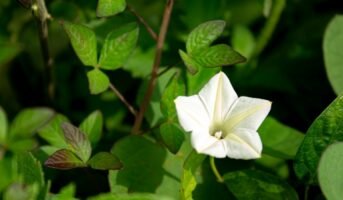Most of us associate plums with little, delightful fruits that are dark blue or purple. But those are by no means the only kinds of plums. Numerous plum varieties can be grown in your backyard. Plums are produced all over the world. We’ll go over some of the most intriguing plum tree (Prunus sp.) varieties in this article. So, read on to choose the ideal variety for your fruit orchard and find out more about growing and maintaining plum trees.
See also: Fig Plant or Ficus Carica: Facts, types, maintenance and uses
Plum tree: Key facts
| Kingdom | Plantae |
| Family | Rosaceae |
| Genus | Prunus |
| Varieties available | At least 40 known plum species |
| Also known as | Aloo Bukhara |
| Height | 6 to 10 metres |
| Climate | Tepid or temperate environment |
| Sun exposure | Full Sun |
| Ideal temperature | 0 – 47 degree Celsius |
| Soil type | Well-drained, loamy soil |
| Soil pH | 5 to 6.5 |
| Toxicity | Cyanide is present in the stems, leaves, and seeds and is particularly poisonous while plants are wilting. |
Plum tree: Types of plums
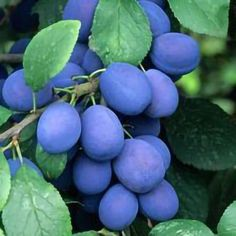
Source: Pinterest
Damson plum
A late-blooming fruit variety called Damson plums is suitable for picking in the late summer and early fall. These eye-catching, vivid blue-purple fruits not only make an excellent snack but also enhance the beauty of your garden with their white blooms. Damson plums typically prevent damage from late frosts since they blossom late in the season. They are extremely sour when first ripe, but they get less tart as the season progresses. They are a little too acidic to consume fresh, though. Try using them for baked products and preserves instead.
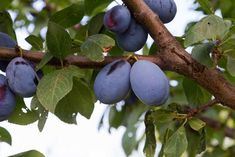
Source: Pinterest
Brooks plum
The Brooks plum tree is a beautiful tree that offers both delicious fruits and aesthetic appeal. It bears little fruits that are almost blue in colour and blooms with beautiful white blossoms. The warm yellow colour characterises the interior flesh. Many eat Brooks plums directly off the tree due to their intense sweetness and juicy texture. You can devour one after the other because of their diminutive size. The Brooks plum is appropriate for smaller yards or gardens because it is cold-hardy and much smaller than many different plum varieties.

Source: Pinterest
Golden plum
This lovely late-blooming plum cultivar is called the golden plum tree. It produces fruits that are particularly sweet and juicy, with a beautiful golden hue, making it ideal for a late-summer snack. Long after most other plums have been taken, this particular plum variety is ready for harvest in mid-July and August. Golden plums are self-fertile, so even with a single tree, you may expect a bumper of fruit. However, two trees will considerably boost your harvest. These wonderful fruits have a rich flavour and a lot of juice, which makes them ideal for eating fresh or preserving.
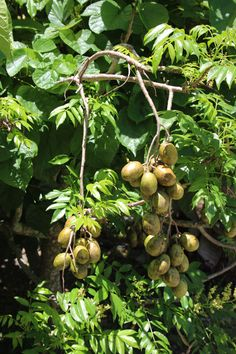
Source: Pinterest
June plum
The June plum is a tasty cultivar that grows quickly and bears enormous green fruit. The huge crop output of this plum tree makes up for its demanding nature and strict requirements, which is why farmers and gardeners adore it. Modern June plums grown in the United States are substantially smaller than their native counterparts, which were once quite huge and are still so today. June plum trees don’t thrive in cooler climes because they have evolved to exist in tropical settings. These plums require as much heat and sunlight as they can get.
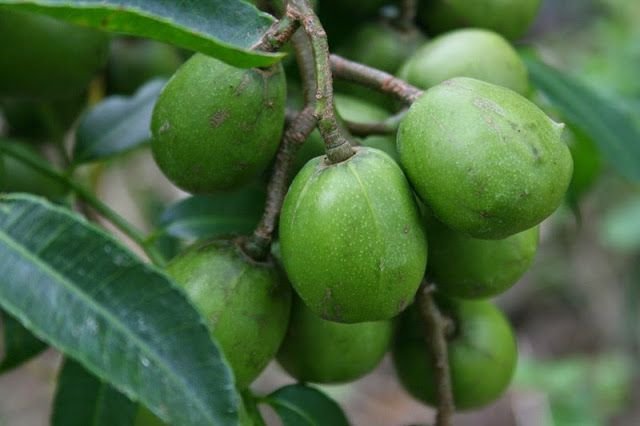
Source: Pinterest
Purple Leaf Plum
Because it is a stunning sight, landscapers love the Purple Leaf plum tree. This particular species of plum tree has vivid purple blossoms and is equally beautiful as a decorative tree and a fruit tree. Smaller than other plum tree kinds, the Purple Leaf plum tree is almost the size of a shrub. The flowers are highly fragrant when they bloom in the spring and will attract many pollinators to your garden. The Purple Leaf plum is edible. However, it is not particularly tasty to people. This type of plum tree performs considerably better in your yard as a stunning ornamental plant.
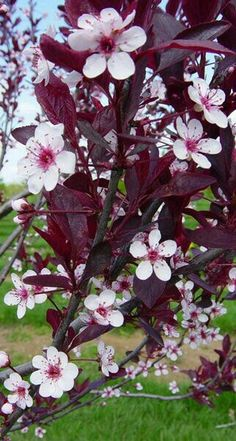
Source: Pinterest
Plum tree: How to grow?
Here’s all you need to know about growing plum trees in your home garden.
Plum tree: Planting
- Select and prepare the location: Depending on the kind of plums you have, your tree might self-pollinate or need a neighbouring tree for cross-pollination. If your tree doesn’t self-pollinate, pick a location with adequate room for at least two mature trees. Dwarf kinds require at least ten feet of area, while standard-sized trees require at least twenty feet.
- Get the sapling ready: If you’re planting a bare-root plant (which is advised for plums as they quickly take root after planting), give the roots a nice drink by soaking them in a pail of water for up to six hours.
- Dig the hole: You want to avoid any roots bending back on themselves when you plant your plum sapling, so the planting hole has to be four to six inches broader and deeper than the root ball.
- Place the roots in the hole: The surface line of the hole should coincide with the soil line on the trunk. Make sure the graft union is visible if your seedling is a grafted tree.
- Spread the roots: Spread them carefully and position them without too much bending to assist the roots in growing out from the tree.
- Fill the hole: Add soil and compost to the hole. Shake the plant’s trunk gently back and forth as you fill it to ensure that the soil reaches the roots. Your foundation was built on a rock, not on a toe. To keep the tree moist and weeds at bay, add a top layer of mulch around it (but not touching the trunk since it could cause the wood to rot).
Plum tree: Watering
Give your plum tree a heavy weekly watering on a low setting during the growing season for the first year or two. With the aid of a drip irrigation system, new trees can develop robust, deep roots. To ensure that established trees have enough water for the rest of the year, water them periodically during the growing season, well into October.
Plum tree: Pests, diseases and other problems
Plum trees are generally robust and easy to cultivate, but various pests, weather conditions, and diseases can cause problems, such as:
Frost damage
Frost damage to the blossom can be avoided by covering smaller trees with fleece when a late frost is predicted or by bringing containerized trees indoors. It is advisable to avoid planting in areas that are susceptible to late frosts.
Late frosts and spring storms
Poor harvests can result from late frosts (as mentioned above) and spring storms, which can damage the blossom and deter pollinators. Additionally, young fruits can be shed due to a lack of water. Plum trees may also have lighter crops in alternate years, which can be addressed with biennial bearing.
Birds and wasps
Birds and wasps may eat the fruits, but it may be possible to protect the fruit on smaller, trained trees with bird netting. Larger trees typically produce bountiful crops, leaving plenty for wildlife as well.
Brown rot
Rotting fruit can be caused by brown rot, a fungal disease that affects apples, pears, plums, cherries, and some related fruit and ornamental trees. It creates a brown, spreading rot in the fruit, often with visible light brown spore pustules. This disease is prevalent during wet summers, and removing rotting fruit can help prevent spore spread.
Caterpillars
Misshapen and/or maggoty fruits may result from the plum moth’s small pinkish caterpillars found in the centre of some early-ripening fruits, which can look slightly distorted. Later fruits are less likely to be affected.
Silver leaf
Damaged leaves can be caused by silver leaf, which results in silvery leaves and dieback of branches. It is essential to remove affected branches promptly.
Bacterial canker
Brown spots or small holes in the leaves are symptoms of bacterial canker, along with shoot dieback – the affected growth should be removed.
Other potential problems include blossom wilt, honey fungus, plum rust, plum aphids, pocket plum, winter moth, magnesium deficiency and spotted wing drosophila.
Plum tree: Harvest
The species of plum tree you choose to grow will determine how you harvest your plums:
- American hybrid and European plums should be picked when their skin feels soft when lightly squeezed and when they twist readily away from the branch. They are ready to eat right away.
- Harvest Japanese plums a little bit early when they are still firm to the touch yet have good colour. Before eating, let Japanese plums ripen inside for a few days.
Plum tree: Care tips
Here’s all you need to know about caring for plum trees.
Plum tree: Pruning
- Pruning plum trees using shears once during the growing season will maintain your tree free of pests and diseases like aphids and silver leaf disease.
- For young trees, choose early spring, while for established trees, choose mid-summer. Never prune in the fall or winter since this may expose your tree to infection and frost.
- Japanese plum trees can grow very thick, so many home gardeners choose an “open centre” tree, cutting almost all of the central branches off and leaving several large branches growing outward from the tip.
- American hybrid and European plum trees require much less pruning, and many gardeners choose a “central leader” tree, which has a tall, skinny shape similar to a Christmas tree.
Plum tree: Thinning
Plum trees can produce too much fruit for their branches to support if they are allowed to produce as much fruit as possible, leading to broken branches. To prevent this, thin fruit frequently. For Japanese types, fruits should be spaced three to four inches apart, and for European and American plum varieties, they should be two inches apart.
Plum tree: Fertiliser requirements
An all-purpose fertiliser or aged compost should be applied to plum trees once a year, preferably early in the spring, before the fruits have begun to grow. After your plum tree has started fruiting, avoid fertilising it because any new growth would take energy away from fruit production and be sensitive to impending cold weather.
Plum tree: Uses
Consumption
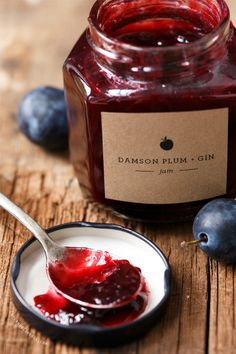
Source: Pinterest
Plum trees bear fruits, which can be consumed both fresh (as in plums) and preserved (as in jams, liqueurs, pastries, or simply desiccated, as in dried prunes), a speciality of the Aegean region of France.
Decoration
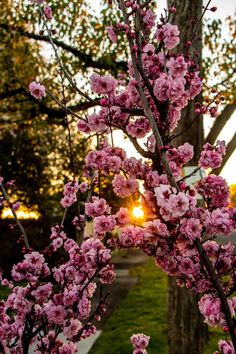
Source: Pinterest
Due to their abundant springtime blossoming and attractive foliage that lasts until the leaves fall, plum trees are also planted as ornamental plants.
Plum tree: Benefits

Source: Pinterest
- Heart condition: Plum phytochemicals and minerals reduce the inflammatory response that leads to heart disease.
- Anxiety: A plum a day could help reduce anxiety. Anxiety levels can rise when your antioxidant levels are low.
- Relieves constipation: Prunes and plums both support gastrointestinal lubrication. They contain a lot of sorbitol, a sugar alcohol that has laxative properties naturally.
- Stroke and high blood pressure: Plums include potassium, which benefits blood pressure management in two ways. It eases stress in the blood vessel walls and aids in your body’s removal of sodium through urination. Your risk of suffering a stroke decreases when your blood pressure goes down.
- Abundant in antioxidants: These compounds shield the body from the cell and tissue deterioration that can cause diabetes, Alzheimer’s, Parkinson’s, and cancer.
- Lower blood sugar levels: Plums are stuffed with fibre, which helps prevent a blood sugar increase after consuming carbohydrates. They can also increase the adiponectin your body produces, a hormone that aids in controlling your blood sugar levels.
- Bone health: Prunes (dry plums), according to animal studies, may help slow down or even stop bone deterioration
FAQs
What plum is the sweetest?
One of the sweetest varieties of plum you can find is the Mirabelle. Some people even actually compare the flavour of this little golden fruit, which is delightfully sweet, to honey.
When do plum trees start to bear fruit?
The fruit-bearing season for plum trees typically lasts from June to September after they bloom in the late winter to early spring. Descendants can yield fruit a year earlier than dwarf versions (2 to 5 years after planting the trees).
Housing News Desk is the news desk of leading online real estate portal, Housing.com. Housing News Desk focuses on a variety of topics such as real estate laws, taxes, current news, property trends, home loans, rentals, décor, green homes, home improvement, etc. The main objective of the news desk, is to cover the real estate sector from the perspective of providing information that is useful to the end-user.
Facebook: https://www.facebook.com/housing.com/
Twitter: https://twitter.com/Housing
Email: editor@housing.com


